Aiptasia are the scourge of the reef aquarium and are hard to eliminate once introduced. Here are five saltwater aquarium fish that will eat them.
Aiptasia eating filefish, Acreichthys tomentosus
The name says it all. The Aiptasia eating filefish does indeed eat Aiptasia, and it stays small too, making it one of few saltwater fish capable of controlling aiptasia in smaller aquariums. In the wild Acreichthys tomentosus can reach 6” in length, although in captivity they rarely attain half that size, and are usually available at just 1-2” in length and can live in tanks of just 30 gallons long term. You can keep them as solitary individuals, in pairs or in groups, and they have been bred in captivity. They will mix with all other fish species but are generally shy and timid.
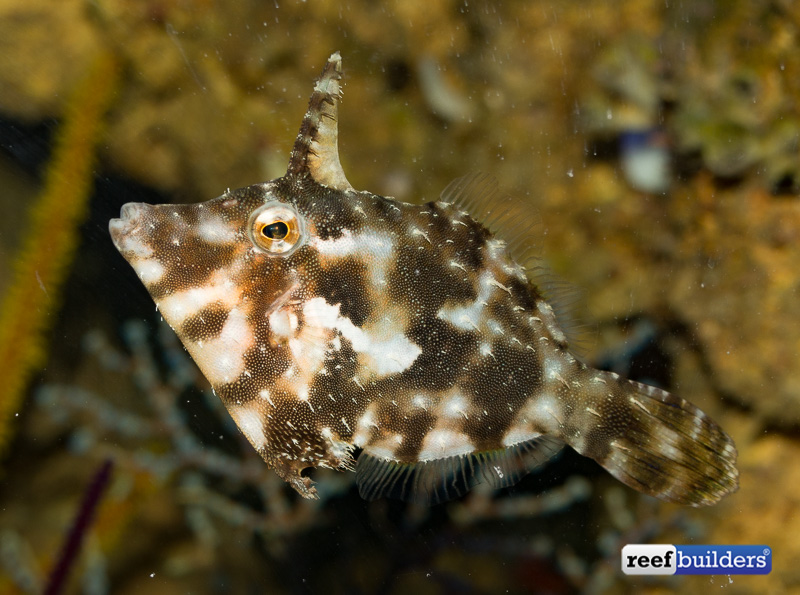
Copperband butterflyfish, Chelmon rostratus
Copperbands are very sought-after fish for the marine aquarium, the added bonus being that they’ll eat Aiptasia. A tank full of Aiptasia actually suits them as they are difficult to coax onto prepared foods and can be difficult to keep for a number of other reasons too. Although not necessarily their natural food, an absence of any aiptasia will require training on other diets, or the fish may fade away and starve.
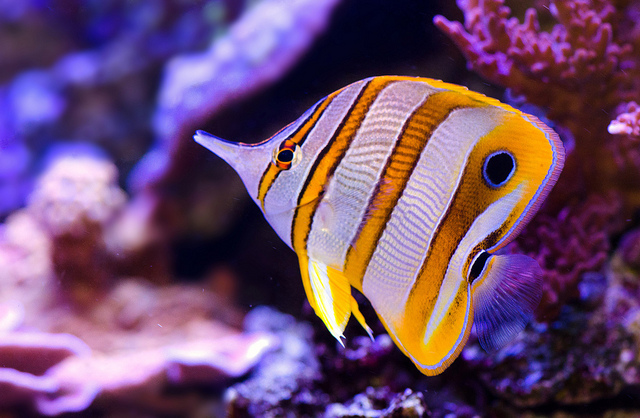
Molly Miller Blenny, Scartella cristata
Looking like a Caribbean version of an algae blenny, Molly Millers have only been widely associated with Aiptasia control in the last few years. Like Aiptasia eating tilefish, they offer a natural aiptasia control solution for smaller tanks, yet are easy to keep in the absence of aiptasia too.
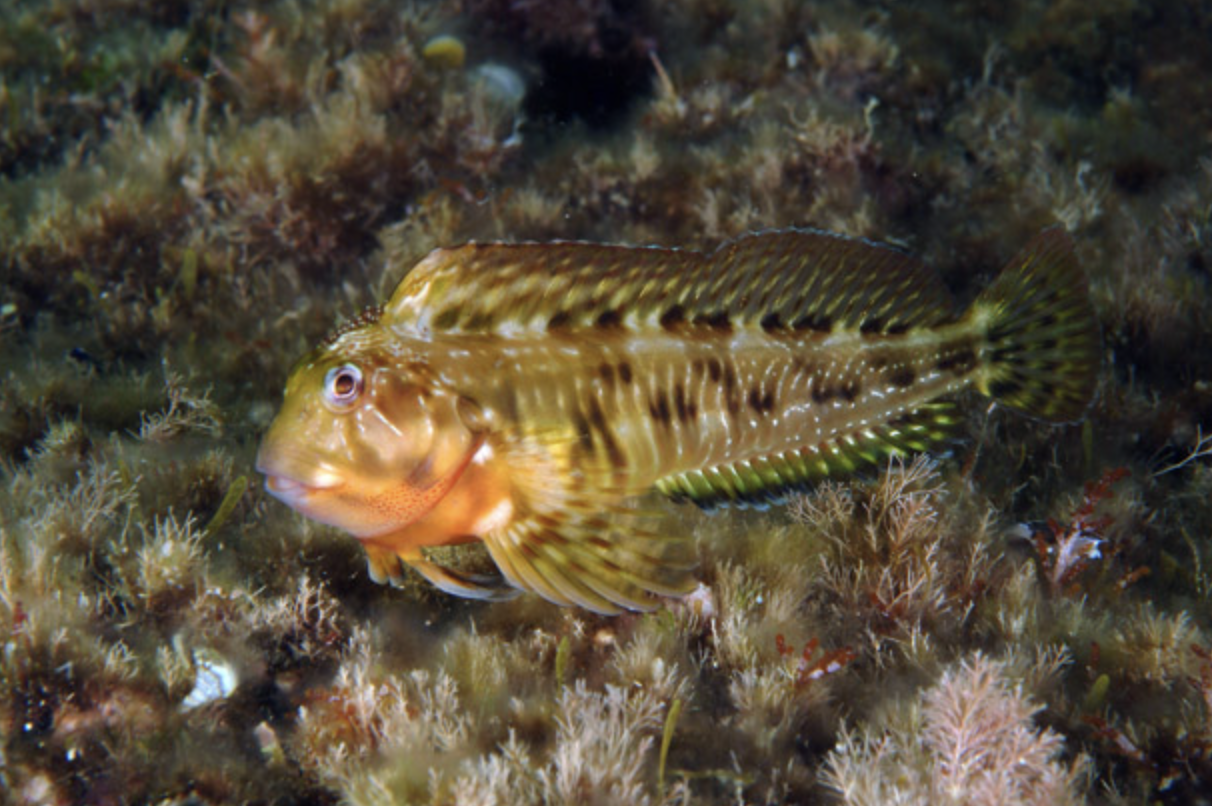
Australian Stripey, Microcanthus strigatus
Relative new kids on the block, Australian Stripeys, Microcanthus strigatus look like butterflyfish but are actually a Sea Chub, and are active and relatively easy to keep. They can be kept singly or in shoals and won’t starve once the aiptasia are gone. A nice “new addition” to the aiptasia control crew.
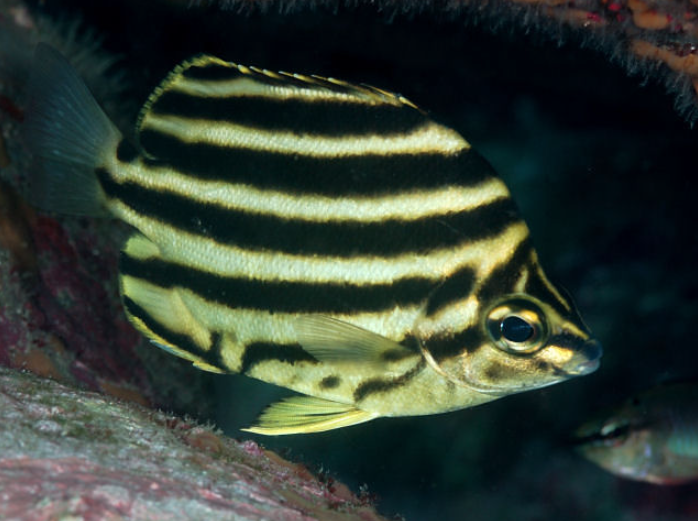
Scats, Scatophagus spp.
Scats are best known as brackish fish, and for their Scatophagus genus name, meaning “dung eater”. Like with the Stripeys, it was the Australians who popularised and proved their use as Aiptasia eaters, but they are large silver fish as adults and aren’t popular in reef tanks for that reason. Scats are usually bought as freshwater or brackish fish and then acclimated to full-strength seawater over time. They can be kept singly or in groups, and along with monos, make good dither fish for large fish-only displays.
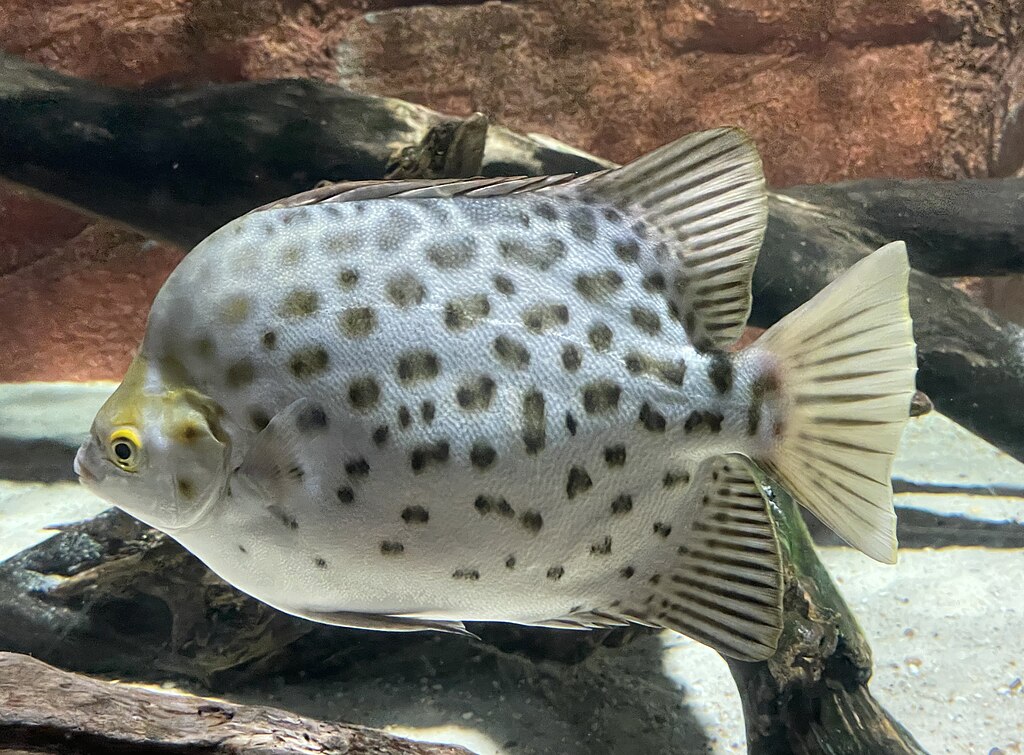
Disclaimer!
The issue with all the above “Aiptasia eaters,” is that any fish that is capable of eating Aiptasia is also capable of eating coral polyps, and you won’t know which types of coral (or other inverts,) it will pick on until you add it to your tank.
The other issue is that with tastier, prepared foods being offered regularly, some owners declare that their Copperband or Aiptasia-eating filefish didn’t eat the anemones they were added to control.
In large tanks, several of the above species could be added along with Aiptasia controlling inverts like Peppermint shrimp and Berghia nudibranchs. A multi-pronged attack is the best way to deal with aiptasia, along with targeted control using aiptasia-controlling products.
Try to lessen the addition and spread of Aiptasia by quarantining coral purchases, not over-feeding, and having good mechanical filtration.


